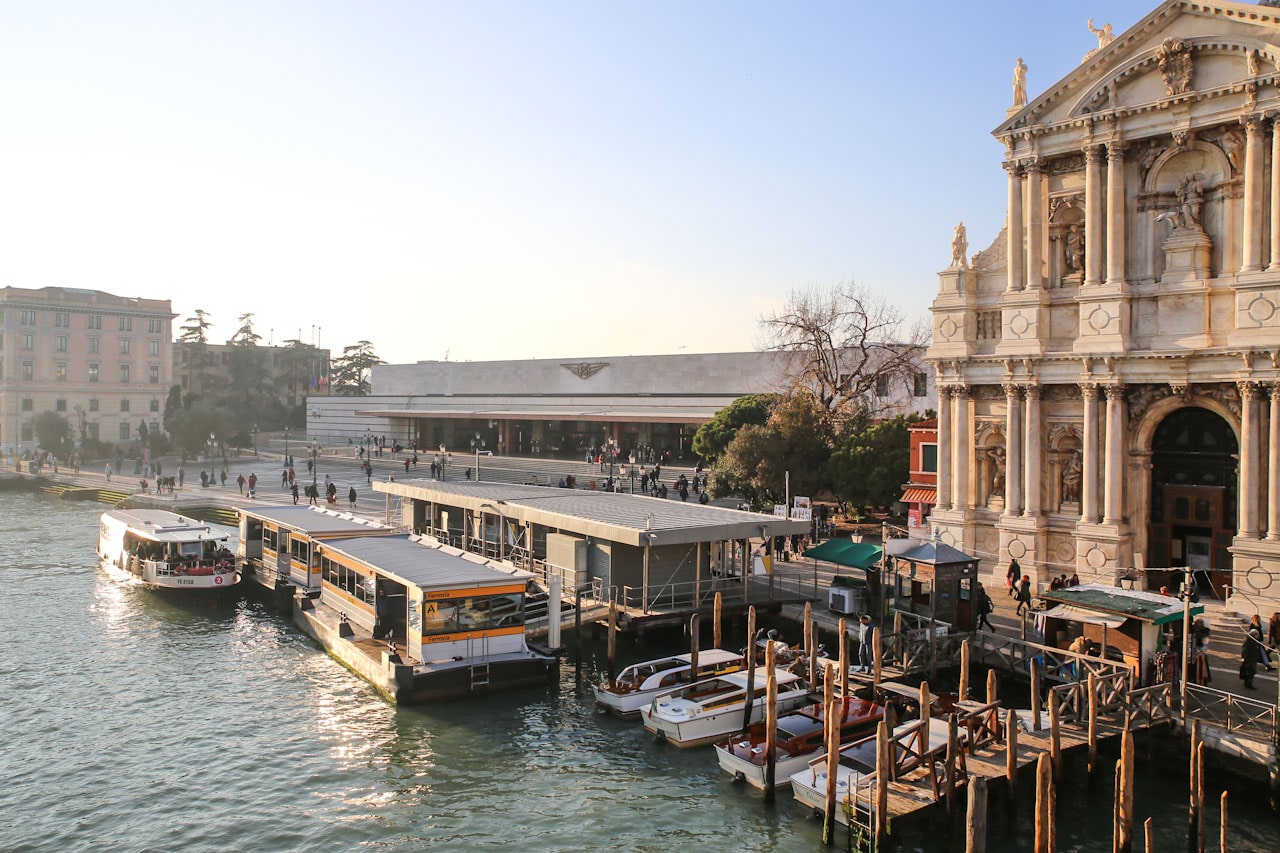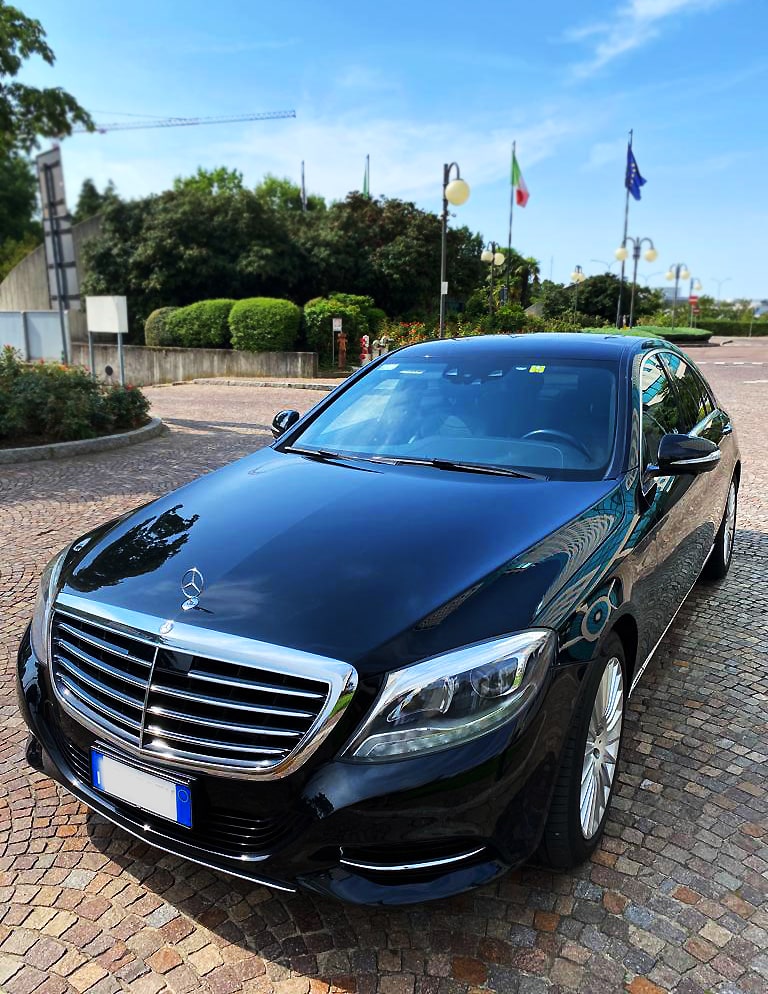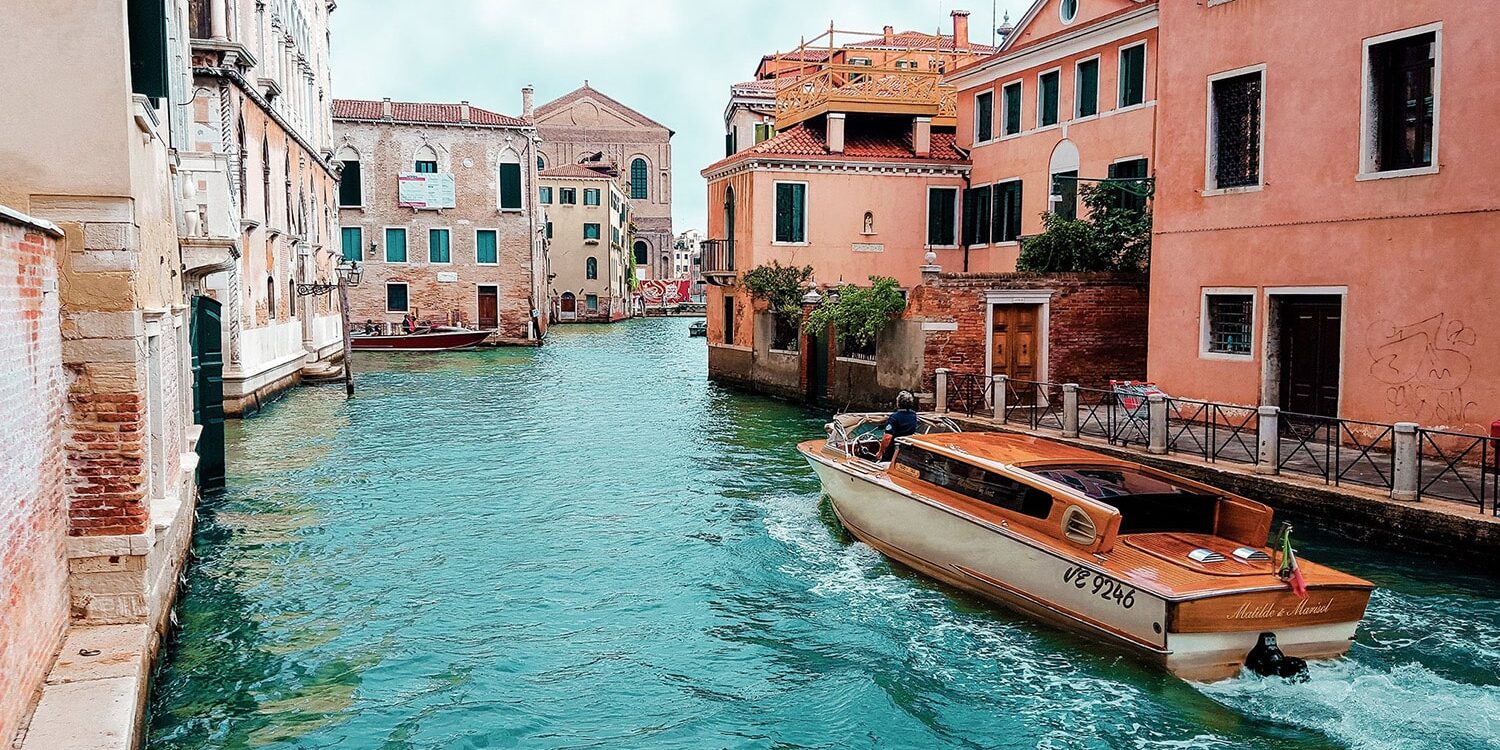How to Get from Florence to Venice: Train, bus, car, taxi
Florence and Venice are two of Italy’s most romantic cities, but they’re nearly 300 km apart. If you’re planning to travel between these gems, you have several options: a comfortable train, a budget-friendly bus, a self-driven car, or a private transfer. Let’s explore each option in detail so you can choose the perfect route for your journey.
By Train from Florence to Venice: Fast, Comfortable, and Scenic
The most popular way to travel from Florence to Venice is by high-speed Frecciarossa or Treno Regionale trains. They depart from Firenze Santa Maria Novella, the main train station in Florence, and arrive at Venezia Santa Lucia (the final station right in the heart of Venice, near the Grand Canal). The fastest trains take just 2 hours and 5 minutes, with departures nearly every hour from early morning until late evening.
It’s best to book tickets in advance on Trenitalia or Italo—this way, you can save money (prices start at €20-25, but last-minute tickets can cost €50-60).
Important tip: Make sure your ticket is to Venezia Santa Lucia, not Venezia Mestre (a suburb where you’d need to take another train or bus for 10-15 minutes to reach the city center).
Pros: Incredibly convenient—you’ll relax in a comfortable seat, sip coffee, and enjoy views of Tuscany and Veneto through the window. No traffic, no transfers, and you arrive right in the heart of Venice.
Cons: During peak season (April-October), seats sell out quickly, especially for morning and evening departures. Also, Italian trains can sometimes be delayed—though this route is generally reliable.

By Bus: Cheap but Slow and Less Comfortable
If you’re on a tight budget, consider FlixBus, which departs from Firenze Villa Constanza Bus Station (near the “Villa Constanza” tram stop, easily accessible from central Florence). Direct buses run several times a day, taking about 4 hours, with tickets starting at €10-15 if booked early.
Buses arrive at Venezia Tronchetto, an island near Venice’s main attractions. From there, you can take a vaporetto (water tram) to St. Mark’s Square in about 10-15 minutes.
Pros: Very affordable, especially for solo travelers. FlixBus offers Wi-Fi and power outlets, so you can work during the ride.
Cons: Four hours on a bus isn’t the most comfortable option, especially if you’re tall. The route follows highways, so scenic views are limited. Plus, the bus doesn’t drop you in Venice’s center—you’ll need to pay extra for the vaporetto.
By Car: Freedom to Explore, but Parking Hassles
If you’ve rented a car, the drive from Florence to Venice takes about 3 hours via the A1 (to Bologna) and A13 (to Padua and Venice) highways. These are toll roads (around €25-30 total), but the roads are well-maintained. Along the way, you could stop in Bologna, Ferrara, or Padua—if you have time for detours.
The catch? You can’t drive into Venice itself! You’ll need to park at Tronchetto or Piazzale Roma (the last points accessible by car). Parking costs €25-40 per day, and in summer, spaces fill up quickly.
Pros: Complete freedom to explore small towns along the way. Ideal for groups or travelers who want to see more of Veneto beyond Venice.
Cons: Expensive parking, traffic near Venice (especially on weekends), and the stress of leaving your car in an unfamiliar place.
By Taxi or Private Transfer: Maximum Comfort at a Price
For a hassle-free trip, you can book a private transfer. A car will pick you up directly from your Florence hotel and drop you at your Venice accommodation (or at least at Piazzale Roma). The journey takes the same 3 hours, with prices ranging from €300 to €450, depending on the vehicle and company.
Pros: No transfers, no parking stress, and no ticket hassles. The driver handles your luggage, and you can relax or nap during the ride.
Cons: The price is steep—especially for solo travelers or couples.
Which Option Should You Choose?
- If you value time and comfort: Book a high-speed train. It’s the most convenient option.
- If you’re on a budget: FlixBus is affordable, but prepare for a longer trip.
- If you want to explore the region: Renting a car works well, but research parking beforehand.
- If traveling with family or a group: A private transfer might be comparable in cost to train tickets but far more comfortable.
Pro tip: In summer, book train tickets or parking spots early—Venice is always crowded. Also, check the weather forecast: From November to December, acqua alta (high tides) can flood parts of the city.
No matter how you choose to travel, Venice won’t disappoint—this city is magical year-round! Gondolas, narrow alleyways, waterfront palaces, and its unique atmosphere await. Buon viaggio! 🇮








